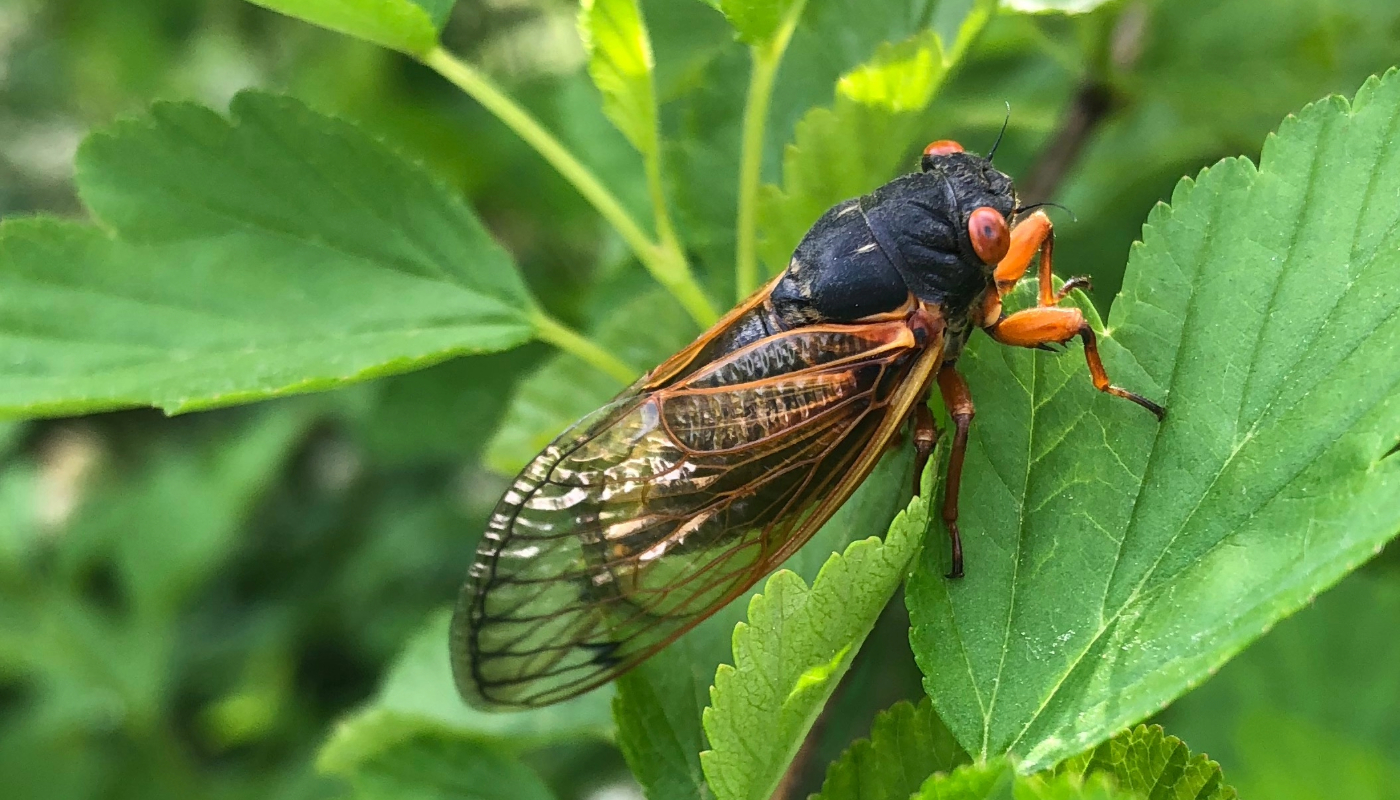The deafening sounds of cicadas will echo throughout Cook County within a few weeks.
Specifically, Cassin’s Periodical Cicada (Magicicada cassinii) and the Pharaoh Cicada (Magicicada septendecim), named for its song—both part of what’s known as Brood XIII of the 17-year cicadas.
When that happens, the Forest Preserves of Cook County will be calling upon community scientists to participate in a sound mapping project to record their cacophonous mating calls to help understand the range, abundance and patterns of their sounds—which can help reveal clues about how well the lands around them have been managed.
“We have many volunteers, staff and contractors caring for the land through restoration,” says Negin Almassi, resource management training specialist for the Forest Preserves, who will lead the project. “Seventeen-year cicadas can tell us about what is happening underground. The vast majority of how healthy a tree is, comes from soil conditions. Measuring cicadas now will help us look into the past and prepare for the future.”
Anyone can be a community scientist—people who collect information about the natural world in specific ways and share the data with researchers. Zachary Salus, a Conservation and Experiential Program aide with the Forest Preserves, notes that community scientists have been recruited to observe cicadas since at least the 1830s, as evidenced by newspaper advertisements soliciting volunteers. “It has always been part of periodical cicada science to have this focus,” he says.
For this year’s sound mapping project, you can get involved by recording and submitting cicada songs (and photos) using the iNaturalist app. Or be trained by Almassi to walk routes in local Forest Preserves and record using an iPhone, which allow for more consistent recordings. Interested volunteers who don’t own iPhones can find a friend or be paired with volunteers who do. (Sign up to participate here)
People can take a leisurely walk and set the app to record every few minutes at listening points. The Forest Preserves will also set up sensors and recorders to examine the impacts of restoration and noise pollution on cicada abundance.
To determine which of the two species of cicadas emerging this year in Cook County are present at any one given location, Salus says that community scientists can also take photos of the cicadas’ marking on their underside to submit with their acoustic recordings. “That will help scientists understand what’s going on with the local brood,” he says. “In the last emergence in Ohio in 2021, they got 20,000 to 60,000 responses from their survey. We hope to attract that and more!”
Partners to the Forest Preserves’ sound mapping effort, to date, include the Midwest Society for Acoustic Ecology, the Singing Insects Monitoring Program, Purdue University’s Dr. Tae Hong Park, the Peggy Notebaert Nature Museum, DePaul University’s Dr. Noe de la Sancha, Dominican University’s Dr. Chris Anderson and PUMA-STEM undergraduate students, Friends of the Forest Preserves, Brookfield Zoo Chicago, and the Chicago Park District.

